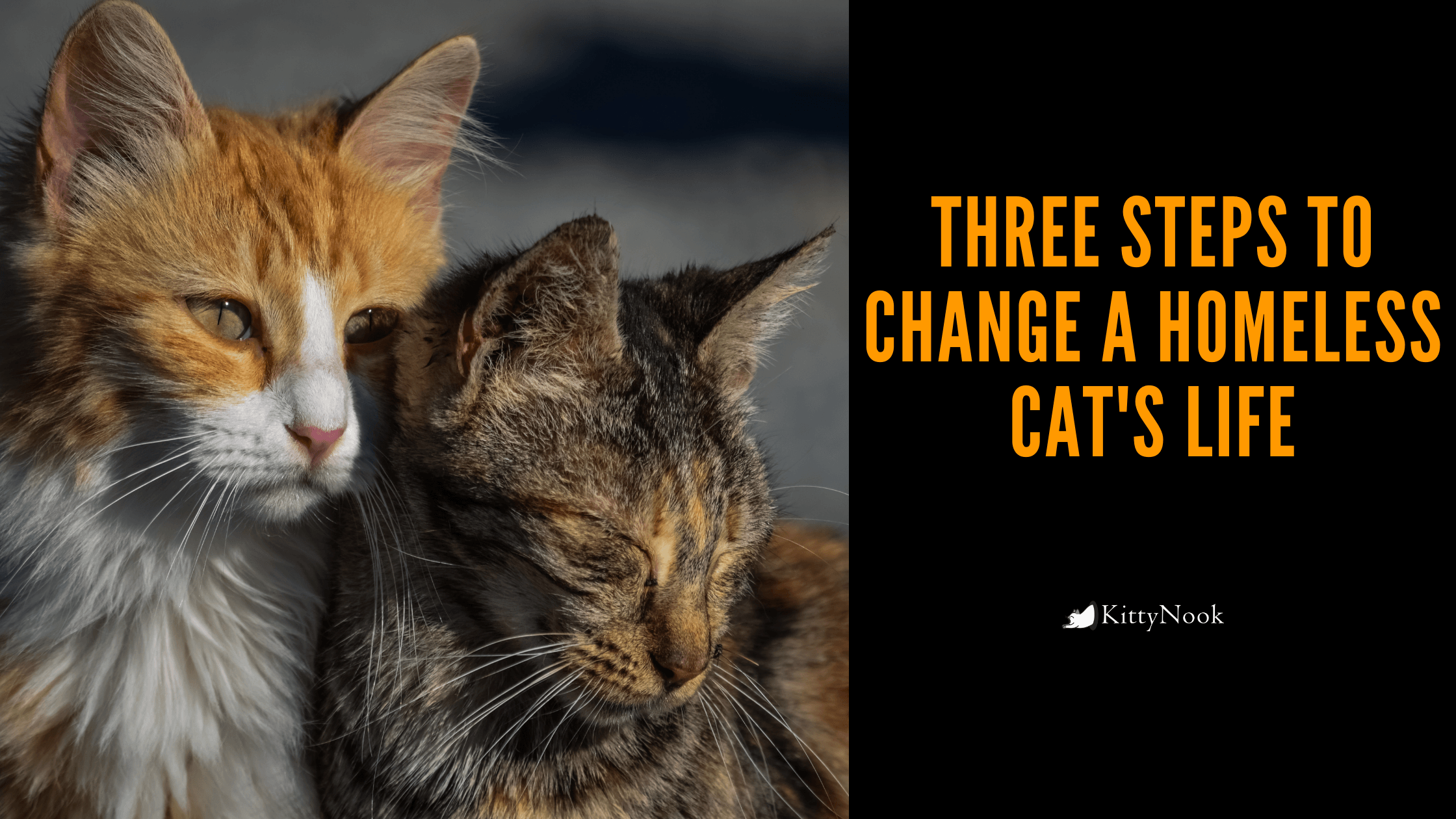Cat overpopulation is a severe problem in the US. If you're outside and see a cat lounging in the grass or on the side of the road, you can follow these three easy steps to help change a homeless cat's life and help curb the overpopulation problem, one cat at a time.
STEP ONE: Ask Around

First, examine whether the cat has an ear-tip (when the edge of one ear has been clipped painlessly). It's the badge of a community cat, suggesting the feline has been in a trap-neuter-return program and has an outdoor house.
No ear-tip? Talk to your neighbors to know whether the cat is, after all, someone's family pet (most lost cats are found within five blocks of where they left from) or if they live outdoors and are being taken care of somehow. Try knocking on doors, perhaps even publishing leaflets around the neighborhood and posting on social media sites. If you find that the cat has a home or is being looked after, your job is done. If not, the cat might be taking care of themselves and hoping to find a person who will take care of them (you!).
STEP TWO: Take them to the vet

Homeless cats that aren't being taken care of require a trip to the vet to be checked. They need vaccinations and also most importantly, to be neutered. If the cat you find will not walk into a carrier, the best way is to get them to the vet is by utilizing a humane box trap.
Entice the feline into the trap with food; feed them simultaneously and place every day to establish a routine.
Get an appointment to have the cat spayed/neutered and immunized. Your local pet sanctuary or cat rescue can generally help you in trapping the cat. You can also communicate with a vet who works with stray/feral area cats.
The day before the visit, set the trap with food inside. If all things go well, the cat will show up for its meal and stroll right in. Cover the trap box with a blanket or a towel and keep the cat someplace safe for the night.
At the vet, the cat will get vaccines, be spayed/neutered, and be ear-tipped. Within a day, they'll be back and will no longer contribute to cat overpopulation! Maybe, with your help, they may become a residential cats; besides, about a third of cats with forever houses had been adopted as strays.
STEP 3: Celebrate

You just saved a life and helped in a bit of a way in the national problem of cat overpopulation! You can do a lot more by joining trap-neuter-return teams in your area.
What about kitten rescue?

It's also possible to help kittens--once they reach two pounds, they can be spayed/neutered and immunized, and hopefully to find their fur-ever homes, too!
Nevertheless, if you find a kindle of newborn kitties and their mother is nowhere to be seen, wait for the mother and resist the urge to scoop them up. The mother cat may be roaming around the neighborhood getting food, or maybe hiding from you. If you don't see her within a couple of hours or if the kittens appear in distress or are located in a risky care area, you can act.
First, make sure they're cozy (do not feed them when they're cold); after that, connect to your local sanctuary or cat rescue group for help. Is there no team nearby? Here's what you can do:
1) Ask around for information about the kindle. Are they feral? If so, what is their background? Observe if they have any clinical concerns that may call for veterinary help.
2) Take them to your veterinarian for a check-up. It is necessary to know if they have fleas, worms, ticks, and so on. Your veterinarian will be able to provide suggestions based on the answers to the questions above. They also might intend to do blood work too. These steps help guarantee that they don't have anything serious, such as kidney disease, heart problems, diabetic issues, cancer, etc.
3) Welcome them to your new home! Give them lots of love and attention. Ensure they obtain lots of food and also water. Hold your horses while they adapt to their new surroundings.
4) Keep in mind that every animal has its personality as well as needs. Some people prefer indoor pets, some like outdoor pets, others delight in both. You should choose which setup is best suited for you and your family. And bear in mind that all pets should have loving houses no matter what kind of pet you have.
5) Help other sanctuaries in finding loving homes for more cats!
Last Words

The United States has a big homeless cat population problem and has to learn a way to deal with homelessness. Leaving unsterilized cats on the roads is not just terrible but also exacerbates the homeless animal situation, bringing even more cats into the world with no loving homes. And bear in mind, when shelters deny pets in need, homeless or not, they do not just magically disappear, and they frequently go on to live a harsh, unpleasant life (and end of life).
No people would argue that any cats would be better off left in the hands of passionless people or in "their outdoor home," an absurd euphemism used by "no-kill" extremists who advocate discarding cats to live on the streets.
Please, do not abandon animals to a fate you would not want your own cat to have. Get homeless kittens (and their mom, too, if you can find her) off the road and into your home. If you can not keep them, take them to a trusted open-admission sanctuary where they'll at least have an opportunity at being accepted into a loving home, rather than encountering (and inevitably losing) the daily battle to survive outdoors.





















